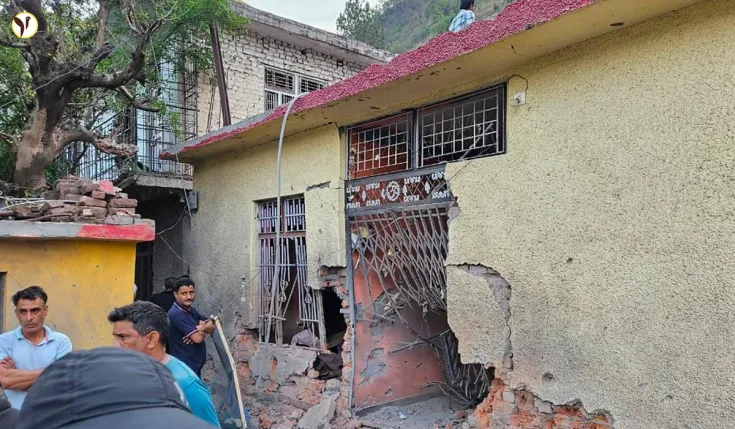India-Pakistan Border Tensions Escalate After Indian Strikes
In a dramatic escalation of tensions along the Line of Control (LoC), seven civilians, including a woman and two children, were killed and 38 others injured in cross-border shelling by Pakistani forces. This followed India's preemptive "Operation Sindoor," a series of precision strikes targeting nine terrorist bases in Pakistan and Pakistan-occupied Kashmir (PoK).
The Aftermath of Operation Sindoor
Early Wednesday morning, India launched Operation Sindoor, a coordinated operation by the Army, Navy, and Air Force, utilizing advanced weaponry like SCALP cruise missiles and HAMMER precision-guided bombs. The operation aimed to dismantle terrorist infrastructure responsible for the April 22 Pahalgam attack that claimed 26 lives. The Indian government emphasized that no Pakistani military installations were targeted, describing the operation as "focused, measured, and non-escalatory."
- Key targets: The Jaish-e-Mohammed (JeM) headquarters in Bahawalpur and Lashkar-e-Taiba’s (LeT) base in Muridke were among the sites targeted.
- Weaponry: India employed a range of high-precision, long-range strike weapons, showcasing its advanced military capabilities.
- Operational details: The strikes were executed entirely from Indian soil, demonstrating careful planning and precision.
However, the strikes triggered retaliatory shelling by Pakistan along the LoC. The Poonch district bore the brunt of the attack, reporting seven deaths and 25 injuries. Additional casualties were reported in Uri (10 injured) and Rajouri (3 injured) sectors.
Civilian Impact and Regional Disruptions
The escalating conflict significantly impacted civilian life. Schools and colleges in five border districts (Jammu, Samba, Kathua, Rajouri, and Poonch) were closed due to security concerns. Airports in Jammu, Srinagar, and Leh suspended operations, and several airlines cancelled or diverted flights. This disruption underscores the wide-ranging consequences of the border conflict.
- Property damage: Reports indicate significant damage to property in villages along the LoC and International Border (IB).
- Disruption of daily life: The closure of schools, airports, and flight cancellations caused widespread inconvenience and economic disruption.
- Humanitarian crisis: The loss of life and injuries have created a humanitarian crisis requiring urgent attention and assistance.
The Indian Army reported that Pakistani forces violated ceasefire agreements in multiple sectors, with intense artillery fire in areas like Krishna Ghati, Shahpur, Mankote, Laam, Manjakote, and Gambeer Brahmana. The Indian Army stated they are responding in a “calibrated manner”.
International Reactions and Ongoing Tensions
While the immediate focus remains on the escalating conflict, the situation also highlights the broader geopolitical dynamics in the region. The incident occurred against the backdrop of ongoing trade tensions between the US and China, which have global ramifications. The US and China are planning talks to de-escalate their trade war, although the outcome remains uncertain. This underscores the complex interplay of regional and international factors shaping the situation.
Conclusion
The intense cross-border shelling following India's Operation Sindoor highlights the precarious security situation along the India-Pakistan border. The tragic loss of civilian lives underscores the urgent need for de-escalation and a return to dialogue to prevent further violence and suffering. The international community must play a crucial role in encouraging both sides to engage in constructive talks and find a peaceful resolution.






